It is a surreal story. A young man sits on a train that races through a short tunnel for an unusually long length of time – faster and faster into the dark abyss. Friedrich Dürrenmatt’s nightmarish story entitled “The Tunnel” could almost be called prophetic if interpreted loosely. The tunnel near Burgdorf, which the writer used as a model for his 1952 story, was the only major breakthrough on the Berne-Olten railway line at the time. Today, there is tunnel after tunnel – and they don’t lead headlong into an abyss but instead into Switzerland’s railway future.
For some time now tunnels have not just been constructed in the Alps and for reasons of geography but also in the relatively flat Central Plateau region to save time and as less and less space is available on the surface. The prime example is the high-speed railway line between Mattstetten near Berne and Rothrist close to Olten that was completed in 2004. This reduced journey times between the major hubs of Zurich, Berne and Basel to below an hour.
One of the most spectacular chapters in Swiss railway history is being written this year with the opening of the Gotthard Base Tunnel. The tunnel will officially go into operation with the change of timetable on 11 December 2016, although leading European and Swiss politicians inaugurated the world-record railway tunnel on 1 June 2016. The lavish state event was attended not only by the entire Federal Council and Parliament but also by German Chancellor Angela Merkel, French President François Hollande and Italian Prime Minister Matteo Renzi as well as 300 media representatives from all over the world.
The mountain laden with symbolism
The spotlight once again falls on the Gotthard, a mountain laden with symbolism like no other in Switzerland. It has shaped national self-identity in various ways. The history of the Gotthard and its stories have become part of national folklore and a collective point of reference. It has occupied the thoughts not just of writers and intellectuals, but also of politicians, military strategists and, above all, engineers. Switzerland’s tunnelling history also began at the Gotthard. Pietro Morettini, a construction engineer from Ticino, blasted the 64-metre-long Urnerloch tunnel from rock in the Schöllenen Gorge in 1707–08, creating the first road tunnel through the Alps.
Nowhere are the two opposite sides of Swiss self-identity more poignantly illustrated than at the Gotthard – defensive positioning and openness. As the heart of the réduit strategy, the Gotthard was until recently home to the most powerful military fortifications in the Alps. At the same time, it has always been one of the most important north-south axes in Europe. The Gotthard railway and the tunnel built in 1882 “influenced the role of Switzerland and its self-perception enormously. No other construction project changed the nation to the same degree – in terms of foreign policy, economics, home affairs and psychologically,” writes Helmut Stalder, author of the new book “Gotthard – der Pass und sein Mythos”. In his book “Das Kalb vor der Gotthardpost”, the literary scholar Peter von Matt remarks: “There is extraordinary logic to the fact that the new railway tunnel through the Gotthard is the greatest national symbol today. Origin and progress are once again fused in this technically outstanding project, also releasing powerful emotions on this occasion.”
From road to rail
The Gotthard Base Tunnel is a key element of Swiss transport policy, seeking to shift traffic from road to rail – especially freight and passenger transport through the Alps. The Swiss people have backed this policy in several referenda. However, whether this transfer policy really offers any environmental benefits is contentious. According to a study conducted under the leadership of the Federal Office for Spatial Development, the new alpine tunnel will hardly relieve any pressure on the roads but instead create new rail traffic, as the newspaper “Der Bund” reports. After the opening of the Lötschberg Base Tunnel in 2007, the increase in rail passengers was not due to transfer but instead newly generated traffic, primarily due to much shorter journey times. In the case of the Gotthard, this will probably apply “to an even greater extent, as the planned construction of the second Gotthard road tunnel makes the journey into Ticino and back more attractive – even if only one lane of both road tunnels can be used as currently planned,” says“Der Bund”.
Objections were also made to the second Gotthard road tunnel ahead of the referendum on 28 February. However, they failed to convince voters. The proposal was approved by 57 %. Amongst other things, this result underlines the fact that the Gotthard Base Tunnel does not represent the end of development. On the contrary, tunnel-building is very much in fashion.
Three further spectacular tunnel projects had been announced even before the opening of the Gotthard Base Tunnel. The idea of unmanned underground freight trains has emerged from business circles – the Cargo Sous Terrain (CST) project is an automated total logistics system. It aims to relieve pressure on the road and railway networks at particularly critical points: “A first sub-section in the central Swiss Plateau region may provide a link between the Härkingen/Niederbipp area and Zurich city centre from 2030. At a later stage, an entire network between Lake Constance and Lake Geneva is planned with branch routes to Basel and Lucerne,” says the CST homepage. On the other hand, an older project called the Swissmetro, an underground magnetic levitation railway system that was to link the major centres in the Central Plateau region, has been put on the back-burner.
A committee from the cantons of Berne and Valais is preparing a treat for tourists, recently presenting a feasibility study for a Grimsel railway line. A railway tunnel between Meiringen and Oberwald would link the narrow-gauge lines of the central Swiss railway and the Matterhorn-Gotthard railway, providing even better access to tourist destinations in the cantons of Berne, Valais, Uri and Grisons. This would create a narrow-gauge railway network in the central alpine region covering 850 kilometres – a world record. Also on board is the Swiss electricity network operator Swissgrid, which could transfer existing power lines from the Grimsel to the underground tunnel.
Another project is in the offing at Lötschberg. In addition to the base tunnel, a second, 14-kilometre-long, unused tunnel is awaiting completion there. Though, whether that will ever materialise is uncertain. The complete expansion of the Lötschberg is nevertheless at the top of the list of projects envisaged by “FABI”, the railway funding bill adopted by the Swiss people two years ago. The railway company BLS has in any event now published a tender notice for design work.
Tunnel boom began back in 1950
The Swiss tunnel boom is not a new phenomenon, even if particularly ambitious projects have emerged in recent times. Things really took off after the Second World War from 1950. Initially it was primarily drainage tunnelling for power stations, then there was a boom in road tunnel construction from 1980 and predominantly railway tunnels from 2000. Over a tenth of both the Swiss railway and motorway networks run through tunnels, which is also a world record. Around 50 railway and some 55 road tunnels are over 2,000 metres long, and the number of kilometres underground is continually rising. One of the most astounding construction projects is currently taking place in the canton of Grisons. The Rhätische Bahn is boring a second tunnel in parallel to the Albula tunnel which is just under six kilometres in length. The project costing CHF 345 million is set for completion by 2022.
However, tunnels are not just being constructed in the Alps. They are primarily being built in the Central Plateau region. Last March, the Federal Office of Transport made a key preliminary decision on what will one day be Switzerland’s second-longest railway tunnel: a 30-kilometre tunnel between Zurich and Rupperswil is to relieve the biggest bottleneck on the Swiss rail network between Aarau and Zurich. Also on the wish list in the Zurich metropolitan area alone are the Brüttener tunnel between Bassersdorf and Winterthur and a second Zimmerberg tunnel between Zurich and Zug.
An article in the “Berner Zeitung” reveals that the motorway expansion – in addition to the Axen tunnel – primarily entails the planning of underground sub-sections on urban motorways: a third route on the Gubrist tunnel on the Zurich north bypass, a Rhine tunnel in Basel, the Lucerne bypass, a third route in the St. Gallen Rosenberg tunnel, four tunnels on the Biel west bypass and a deepening of the city of Berne’s Wankdorf-Muri section.
Entire tunnel systems are also being built around the railway stations of major cities. In December 2015, a further large underground station went into operation in Zurich, primarily serving east-west long-distance traffic. The pressure from commuter traffic in the urban agglomeration – namely from Winterthur, Zug and Aarau – will lead to more tunnels in the direction of Zurich central station. Further underground stations are planned in Zürich-Stadelhofen, Basel, Berne, Geneva and Lucerne.
Dark chapter in tunnel-building
So, are the Swiss a nation of tunnel builders? Not really, the heavy work is usually done by foreigners. That has always been the case since the first Gotthard railway tunnel opened in 1882. Despite technical progress, tunnel-building is still hard work today and often takes place under difficult conditions. Nine workers lost their lives during the 17-year construction of the Gotthard Base Tunnel.
That figure was much higher on the first Gotthard tunnel where 199 workers were killed during work lasting ten years. The tunnel workers also endured tough living conditions back then. A strike was called in 1875. The Uri militia, unable to cope under the pressure, fired shots into the crowd during the industrial dispute, killing four workers and leaving several seriously injured. Two federal committees examined the living conditions of the tunnel workers. An inspirational doctor gave a candid account: “The misery in the quarters built for the workers is beyond words. There are rows of beds in small, dismal rooms – wretched, putrid straw mattresses.” So, the success story of Swiss tunnel-building has included a few dark chapters in the past.
Jürg Müller is an editor with “Swiss Review”.
Four records at the Gotthard
Almost everything is on a gigantic scale at the new Gotthard Base Tunnel. Costing over CHF 12 billion, the tunnel, between the north portal in Erstfeld (Uri) and the south portal in Bodio (Ticino), is Switzerland’s most expensive single construction project ever. The overall cost of the “New Railway Link through the Alps” (NRLA) – with the Lötschberg, Gotthard and Ceneri base tunnels – amounts to over CHF 23 billion.
A number of world records have been set at the Gotthard in terms of transport engineering. The Gotthard railway tunnel of 1882 was the longest in the world at the time, covering 15 kilometres. The 16.9-kilometre Gotthard road tunnel was also the world’s longest for motor traffic when it opened in 1980. The Gotthard Base Tunnel, which opened in 2016, is again the world’s longest railway tunnel covering 57 kilometres. With a rock overburden of up to 2,300 metres, it is also the deepest tunnel on the planet.
Key facts about the Gotthard Base Tunnel:
- Construction took 17 years.
- At peak times, around 2,400 people worked on the tunnel construction sites, mainly foreigners.
- The total length of the two main tunnels and the safety, ventilation and cross-passages is 152 kilometres.
- The two one-lane tunnels are connected by cross-passages every 325 metres.
- 80 % of the driving of the main tunnels was carried out by tunnel-boring machines and just 20 % by blasting. There was 28.2 million tons of excavated material.
- The flat trajectory through the Alps increases efficiency, reliability and transport capacity. Freight trains through the Alps no longer require banking engines; longer trains (750 metres, with special authorisation even 1,500 metres) carrying greater weight can be deployed and journey times are reduced.
- Up to 260 freight trains and 65 passenger trains a day can travel through the base tunnel.
- The maximum speed for freight trains is 160 kmph and up to 250 kmph for passenger trains.
- The time gain between Zurich and Lugano will be around 45 minutes upon final completion in 2020.

![[Translate to English:]](/fileadmin/_processed_/3/7/csm_max-spring-3-cartoons-de_3c29839370.png)
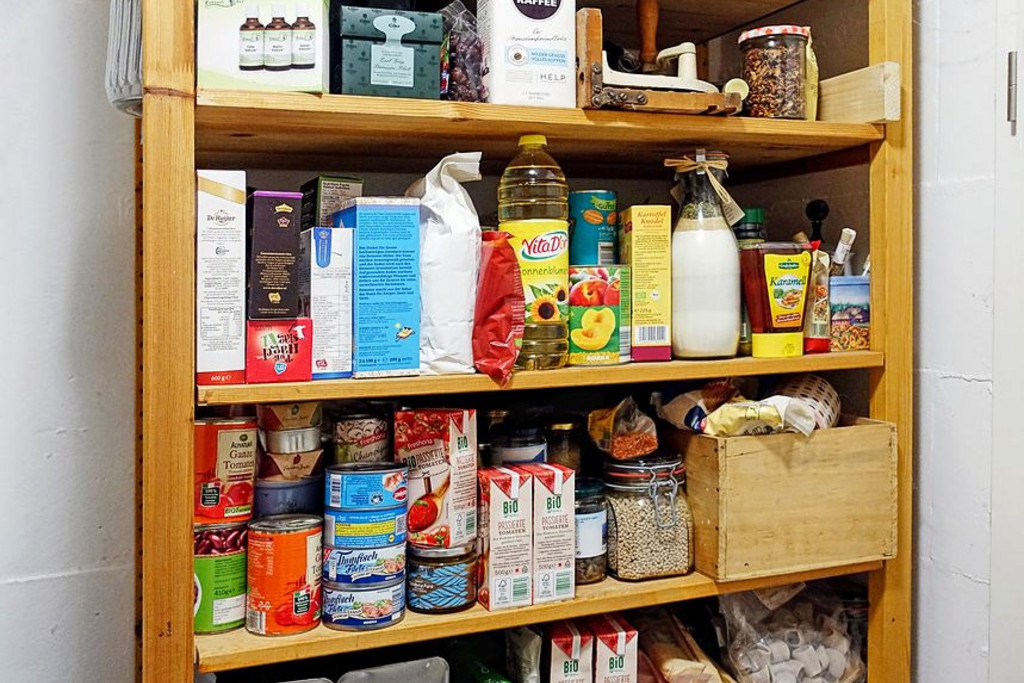
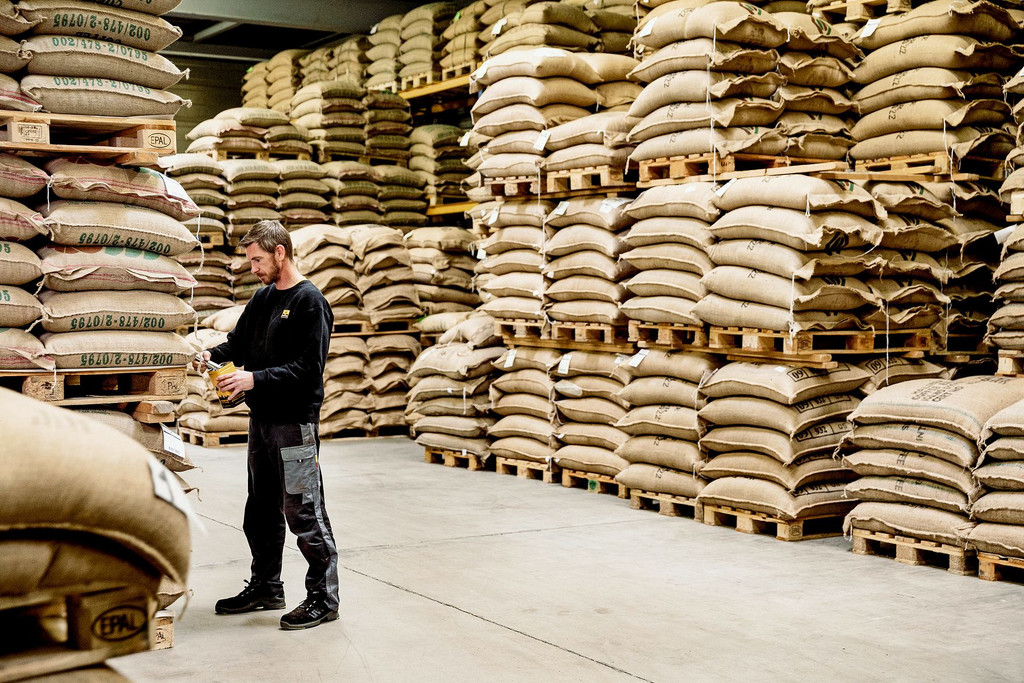



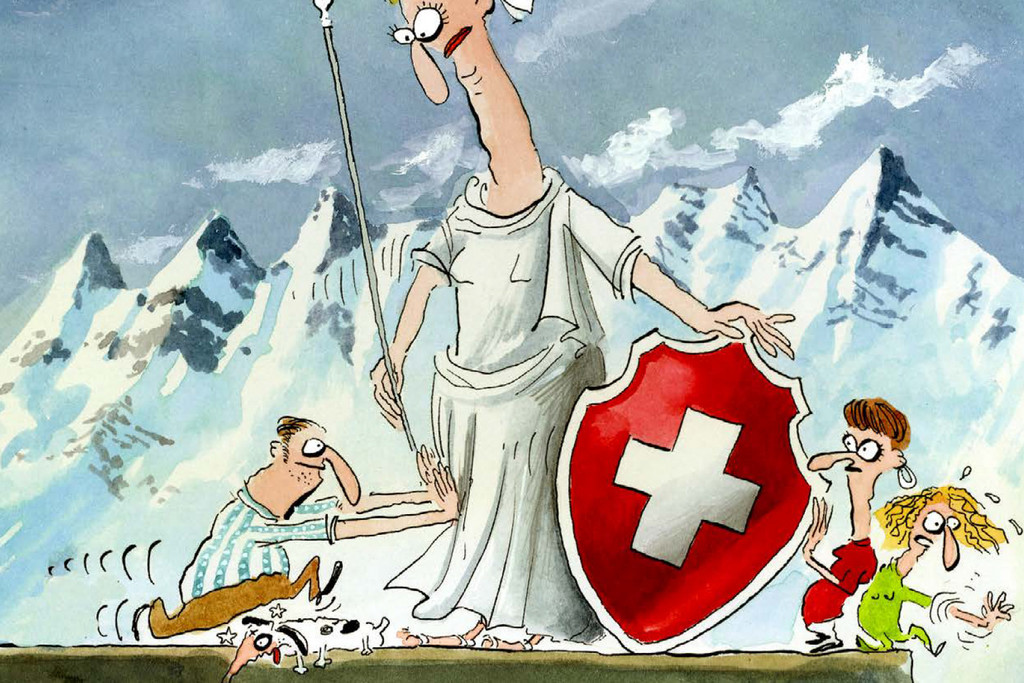



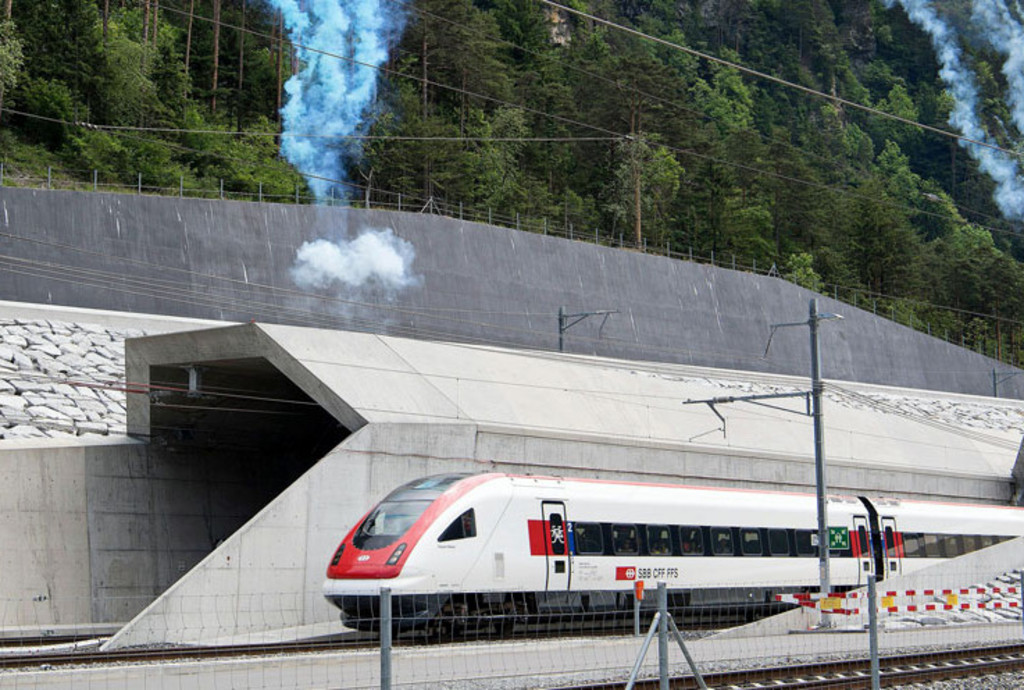
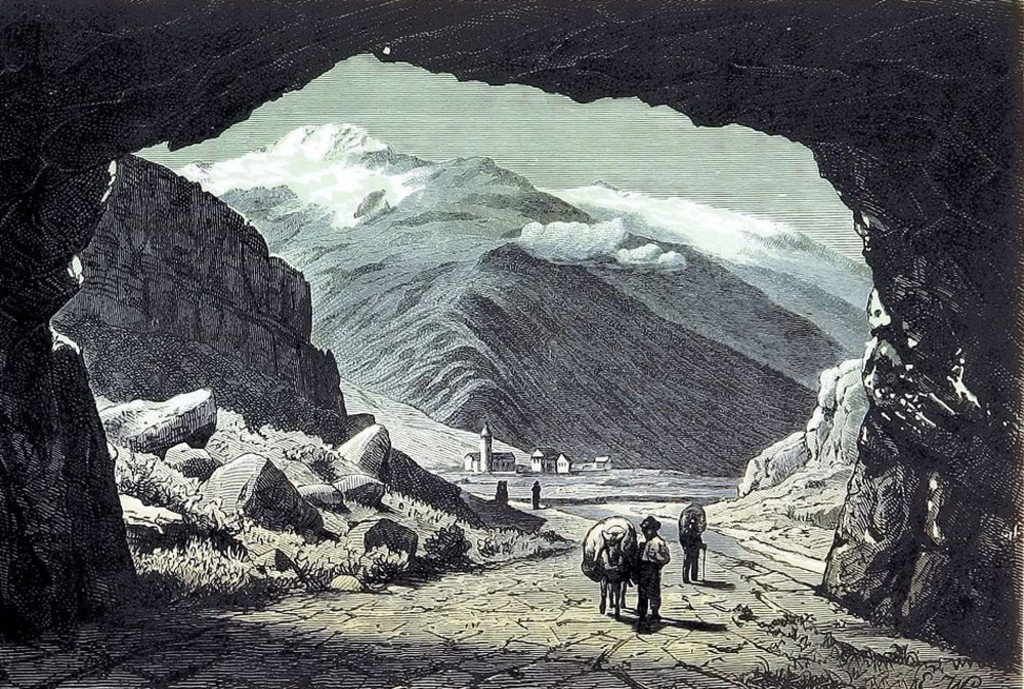
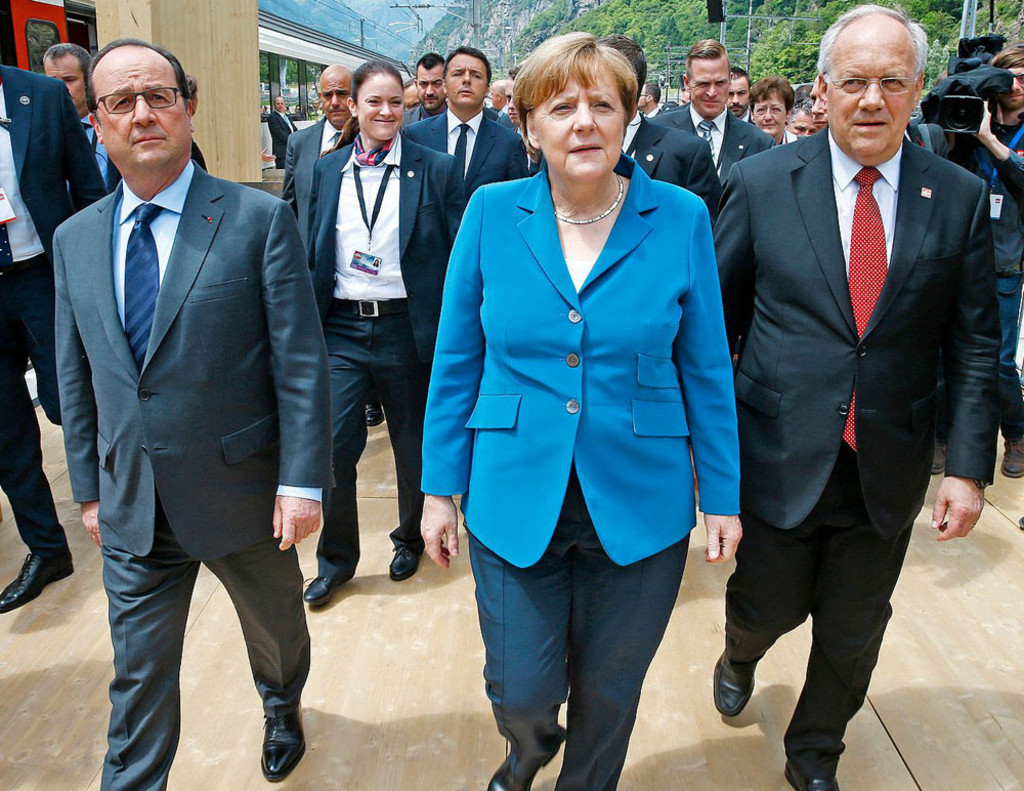
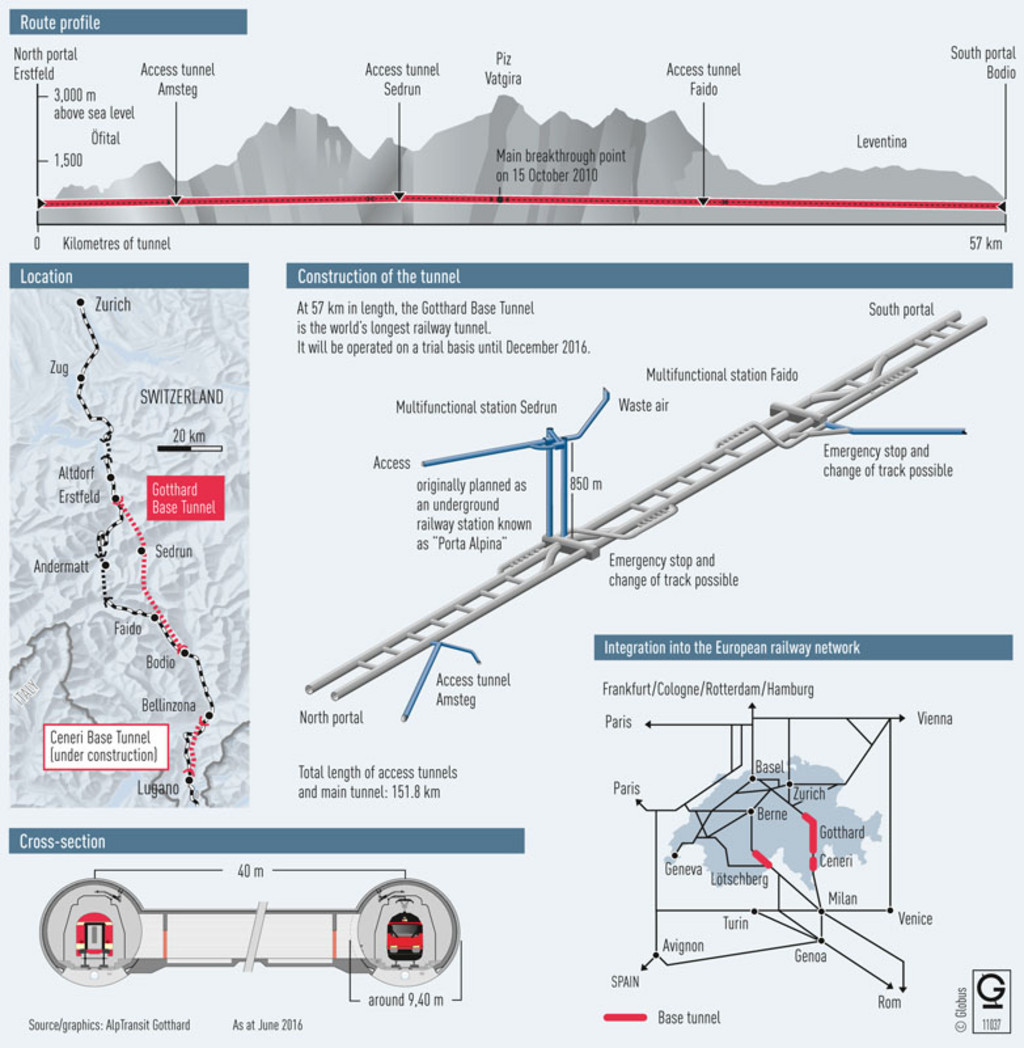
Comments
Comments :
Eine technische Errungenschaft der Superlative, aber auch ein Zeugniss der (politischen) Willenskraft der Bevölkerung die hinter so einem massiven Projekt steht.
ou plutôt
coûté la vie?
Dieser Text ist im obigen Artikel enthalten. Piero Morettini war EIN TESSINER!! Tessin wird nach wie vor als Ausland betrachtet, aber je nachdem welche Interesse dahinter stecken. Schade!!
Die Schweizer Tunnelgeschichte begann denn auch am Gotthard: Der Tessiner Baumeister Pietro Morettini sprengte 1707 bis 1708 das 64 Meter lange Urnerloch aus einem Felsen der Schöllenenschlucht, den ersten Strassentunnel der Alpen.